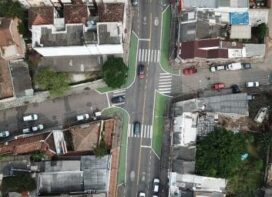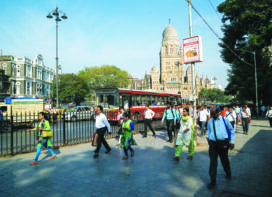 There has been a substantial increase in the use of personalized transportation modes in the last decade during which the cost of travel had increased considerably. While population of six major metropolises in India increased by 1.9 times during 1981 to 2001, the number of motor vehicles went up by over 7.75 times during the same period (Ministry of Urban Development, 2014). The growth in traffic has also resulted in considerable increase in the rate of accidents. From 2014 to 2015, number of accident fatalities in India had risen by 4.6% and the number of injured increased by 1.4%. Number of accidents and fatalities reported in 2015 amounts to 501,423 and 146,133 respectively, which translates to an alarming figure of 17 fatalities per hour (MORTH, 2016).
There has been a substantial increase in the use of personalized transportation modes in the last decade during which the cost of travel had increased considerably. While population of six major metropolises in India increased by 1.9 times during 1981 to 2001, the number of motor vehicles went up by over 7.75 times during the same period (Ministry of Urban Development, 2014). The growth in traffic has also resulted in considerable increase in the rate of accidents. From 2014 to 2015, number of accident fatalities in India had risen by 4.6% and the number of injured increased by 1.4%. Number of accidents and fatalities reported in 2015 amounts to 501,423 and 146,133 respectively, which translates to an alarming figure of 17 fatalities per hour (MORTH, 2016).
Absence of pedestrian facilities and bicycle tracks has left these vulnerable road user at higher risk and are forced to choose other alternatives, thereby further increasing the dependency on motorized transportation modes.
Thus, it becomes vital to curtail the dependency on motorized transport. A seamless interchange between transportation modes will ensure that the requirements of different commuters are satisfied and the transportation facility will operate efficiently. This is the core of the mobility part of smart city concept.
National Urban Transport Policy
 The National Urban Transport Policy was formulated in 2006 to identify the problems and priorities of the transportation sector and to create a roadmap for state administration to develop schemes and policies to remedy the same. This was subsequently revised in 2014. The objective of this policy is to plan for the people rather than vehicles by providing sustainable mobility and accessibility to all citizens to jobs, education, social services and recreation at affordable cost and within reasonable time. The objectives of this policy is expected to be achieved through comprehensive approach which includes Urban Transport Planning, Infrastructure Design, Public Transport, Non-Motorized Transport, Traffic Management, Financing, Governance and Capacity Building (Ministry of Urban Development, 2014).
The National Urban Transport Policy was formulated in 2006 to identify the problems and priorities of the transportation sector and to create a roadmap for state administration to develop schemes and policies to remedy the same. This was subsequently revised in 2014. The objective of this policy is to plan for the people rather than vehicles by providing sustainable mobility and accessibility to all citizens to jobs, education, social services and recreation at affordable cost and within reasonable time. The objectives of this policy is expected to be achieved through comprehensive approach which includes Urban Transport Planning, Infrastructure Design, Public Transport, Non-Motorized Transport, Traffic Management, Financing, Governance and Capacity Building (Ministry of Urban Development, 2014).
Smart Mobility
Smart mobility refers to the use of technological solutions to optimize traffic flow through a facility, while adapting to the needs of the customers through frequent feedbacks. It should provide a seamless, efficient and flexible travel across different modes of transportation. Smart Mobility is not a unique initiative, but a complex set of projects and actions, different in goals, contents and technology intensity (Benevolo, 2016). Thus, it may be defined as a paradigm shift to a more flexible and multi-modal transport system.
Smart mobility aims to improve the quality of life of the citizen by the use of innovative technologies. These goal could be achieved through the collective contributions of all concerned stakeholders.
 TrafficInfraTech Magazine Linking People Places & Progress
TrafficInfraTech Magazine Linking People Places & Progress


